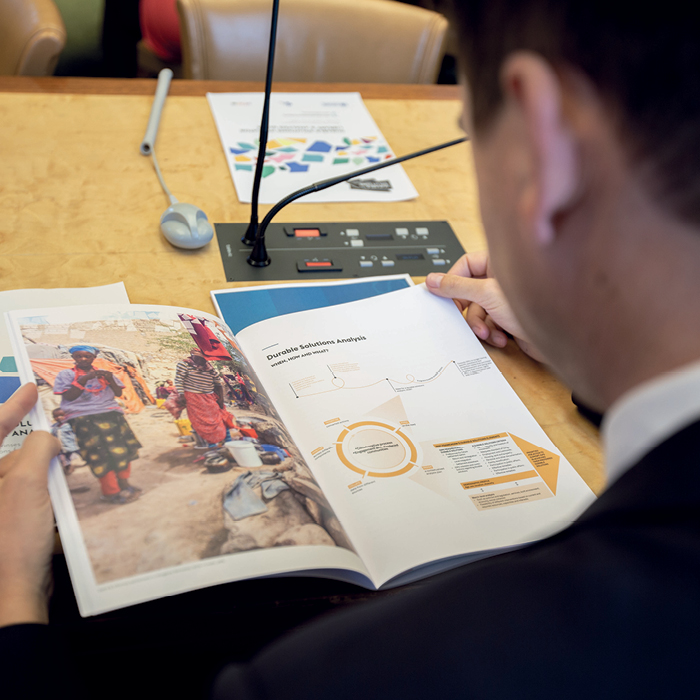In an effort to transform the IASC 2010 Framework on Durable Solutions for Internally Displaced Persons into an operational analytical toolkit, the Interagency Indicator Library and Analysis Guide were developed based on the framework’s widely recognised criteria to determine the extent to which durable solutions have been achieved.
The interagency durable solutions project was led by the Special Rapporteur on the human rights of IDPs and coordinated by JIPS in collaboration with a technical steering committee made up of a broad group of partners engaged in durable solutions work. Its members included DRC, ICRC, IDMC, IOM, FIC/Tufts, NRC, the UN Peacebuilding Fund, UNDP, UN-Habitat, OCHA, UNHCR, the World Bank and the Regional Durable Solutions Secretariat (ReDSS).

The Indicator Library is just that: a library of agreed-upon, measurable and statistically sound indicators organised into three modules that reflect the structure of an analytical framework for durable solutions analyses: core demographic indicators, IDPs’ preferences and plans for the future, and the IASC framework’s eight criteria for measuring progress toward solutions. The indicators can be used for different data collection approaches and timeframes, including profiling, needs assessments, programmatic assessments, displacement tracking, as well as to inform local or national level monitoring frameworks.
The Analysis Guide provides an analytical framework and outlines the principles and steps to implement a systematic and collaborative durable solutions analysis process.
The recently added Question Bank translates the indicator library into questions, to help jumpstart the process of designing the required durable solutions tools.
The Interagency Indicator Library and Analysis Guide together give governments and the humanitarian and development sectors a tool to use collaboratively for comprehensive and inclusive durable solutions analysis and monitoring. This can inform policy and strategy processes, as well as programming and advocacy efforts to support displaced families and communities in their pursuit of durable solutions.
The indicators can be used for different data collection approaches and timeframes, including profiling, needs assessments, programmatic assessments, displacement tracking, as well as to inform local or national level monitoring frameworks.
They have been aligned with the 2030 Agenda for Sustainable Development, allowing for monitoring of its commitment to leave no one behind, including IDPs. The indicators are meant for collecting data directly from IDPs and others affected by displacement, which should be complemented with macro-level information on the overall context.